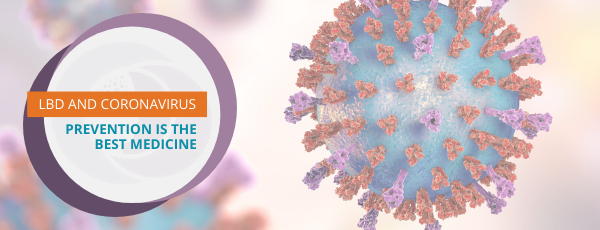Key Highlights:
The FDA approved marketing of aducanumab for the treatment of Alzheimer’s disease under a special accelerated approval process.
Aducanumab has not yet been proven to slow the progression of Alzheimer’s disease or provide clinical benefit.
Dementia expertise is required to determine who may potentially benefit from aducanumab and who may be at greater risk for brain swelling and/or bleeding.
Clinical trials are needed in people with co-existing LBD and AD to determine if aducanumab is safe and effective for those with LBD.
The biggest dementia-related news this month was the Food and Drug Administration’s (FDA) decision to approve the marketing of Biogen’s aducanumab (brand name Aduhelm) for the treatment of Alzheimer’s disease (AD) under the “accelerated approval process.” Federal law allows the FDA to accelerate the approval of a drug intended for a serious disease, when it improves a measure of a disease and is “reasonably likely” that the measure predicts clinical benefit.
Aducanumab may have the potential to slow down progression of AD. This is the first FDA-approved drug that may be able to do more than just treat symptoms. This new treatment option may be a very important next step for treating people with Alzheimer’s disease.
The FDA decision was quite controversial, in part because research has not yet convincingly proven this treatment will slow down the progression of Alzheimer’s disease. What the studies did prove is that aducanumab shows dose-dependent effects on lowering amyloid plaque burden in the brain, a protein-related change in the brain of people with AD. As amyloid plaques are considered an important biological marker of AD, removal of amyloid was determined by the FDA to meet the requirement of a surrogate endpoint. Surrogate biomarkers are measurements that may predict positive clinical benefits. Removal of amyloid from the brain therefore might predict slowing of cognitive decline in Alzheimer’s.
Because the long-term benefit of aducanumab treatment has not been fully determined, the FDA has issued an approval that is contingent on Biogen carrying out additional studies to confirm that amyloid reduction is associated with clinically measured slowing of Alzheimer progression.
Relevance to Lewy Body Dementias
Research has shown that people with co-existing Lewy body dementia (LBD) and Alzheimer’s disease have a faster rate of progression and worse health outcomes. Studies of people with LBD who have come to autopsy support that most people with LBD have at least some Alzheimer’s changes in their brain. As such, aducanumab may offer some potential benefits to people with LBD. However, aducanumab has not been studied in LBD yet and we do not know whether it is effective or safe in people with LBD.
The Lewy Body Dementia Association is issuing this position statement to ensure the LBD community and healthcare professionals receive clear, expert guidance on aducanumab: People with LBD can have severe medication side effects that are not common in people with Alzheimer’s. As such, clinical trials are needed to determine if aducanumab is safe and effective in people with LBD who also have co-existing Alzheimer’s disease.
Considerations for Clinicians
The drug has only been studied in people with mild cognitive impairment due to Alzheimer’s disease and mild dementia due to Alzheimer’s disease.
Expert panelists on the Alzheimer’s Association’s recent 4-hour webinar, Dialogue: Current Perspectives on Aducanumab, emphasized that AD expertise is needed to determine if an individual is an appropriate candidate for this treatment.
Periodic MRIs reviewed by physicians trained and experienced in MRI scan interpretation is critical to monitor for brain inflammation, including brain swelling, bleeding or both, which may occur in up to 40% of individuals treated with aducanumab. It is not known what impact dose titration has on efficacy and side effects.
There may be major financial barriers to anyone being evaluated for and treated with aducanumab right now.
- Pre-Treatment Testing: A person must first have to undergo tests to confirm they have biological signs of Alzheimer’s disease, via a lumbar puncture (“spinal tap”) or an amyloid PET scan. While Biogen is providing assistance to cover the cost of the measurement of amyloid following lumbar puncture, there will still be out of pocket costs to the patient. Measurement of amyloid with a PET scan would be entirely at the expense of the patient.
- Treatment: If a person is determined to be eligible for treatment, the annual price of Aduhelm as reported by Biogen is $56,000, plus the cost of administering the infusion. Eventually insurers, including Medicare, will decide whether the drug and its associated diagnostic and monitoring tests should be covered.
- Follow-Up Tests: Periodic safety monitoring with clinicians, MRI scans, etc., will also be necessary, and these costs also need to be considered.
Receiving aducanumab treatments may exclude people from participating in certain research studies.
Aducanumab Clinical Trials in LBD Needed
To be clear, LBDA strongly advocates for the study of aducanumab in individuals with LBD who have coexisting AD. There are extremely important unanswered questions about safety and potential long-term benefits in LBD that must be answered. LBDA supports a network of experts in LBD through its Research Centers of Excellence Program. If there is a decision to conduct a study of aducanumab in LBD, LBDA and its Research Center of Excellence Program is prepared to participate in such a study.
In the meantime, LBDA is pleased to offer answers to some Frequently Asked Questions about aducanumab, what is known, and what is not known about its benefit to people with Alzheimer’s disease and other dementias.
